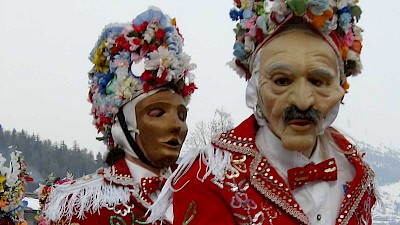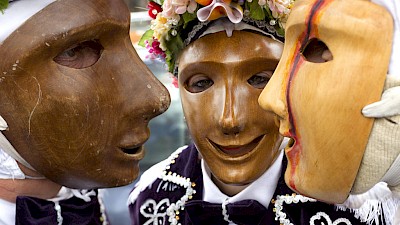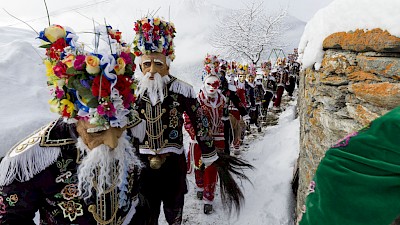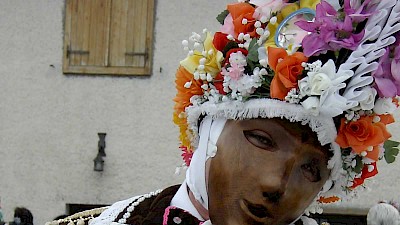
The Carnival
The "landzettes"
The carnival is a deeply rooted tradition in the Great St. Bernard Valley. A moment of socializing and gathering, the carnival has its origins in ancient propitiatory rites associated with the arrival of spring. However, the carnival in this valley commemorates, through its costumes, Napoleon's passage through the Great St. Bernard Valley in 1800, when he crossed the valley with tens of thousands of men on his way to the Battle of Marengo.
The precious velvet costumes of the carnival, as well as the headdress, are meticulously hand-embroidered and adorned with mirrors, colored ribbons, and thousands of sequins (approximately 30,000). The landzette, as the masks are called, have their faces covered by masks (formerly made of wood), hold a horse's tail in their hands, and wear a belt with a bell around their waist. These elements, along with the mirrors that reflect light, are interpreted by anthropologists as symbolic tools to ward off evil spirits.
Each village celebrates carnival on a different day. The masks are accompanied by musicians, the harlequin with his lady, the bear, the devil, and other characters. All together they parade through the village, animating the cold winter days with songs and dances.









